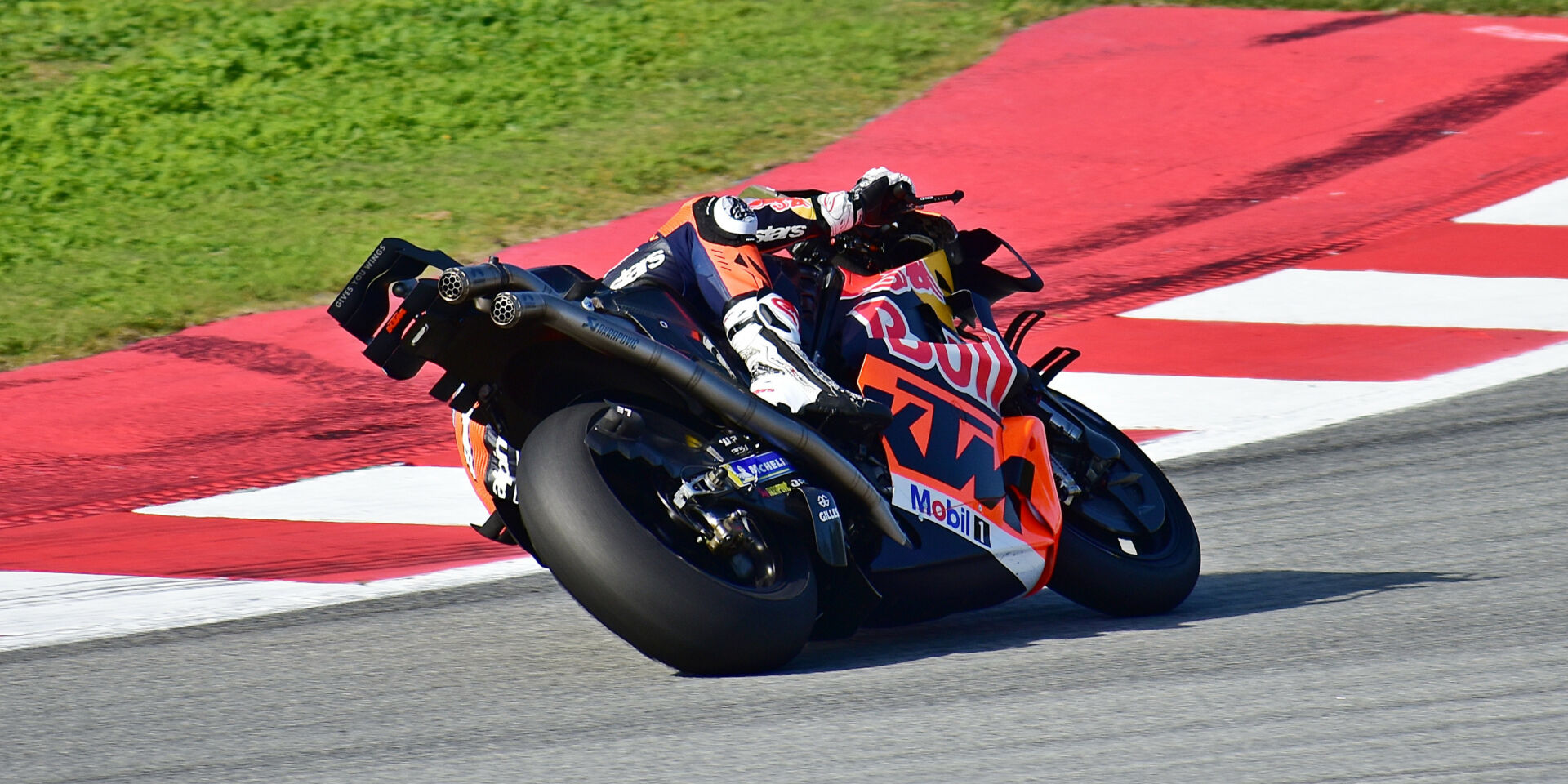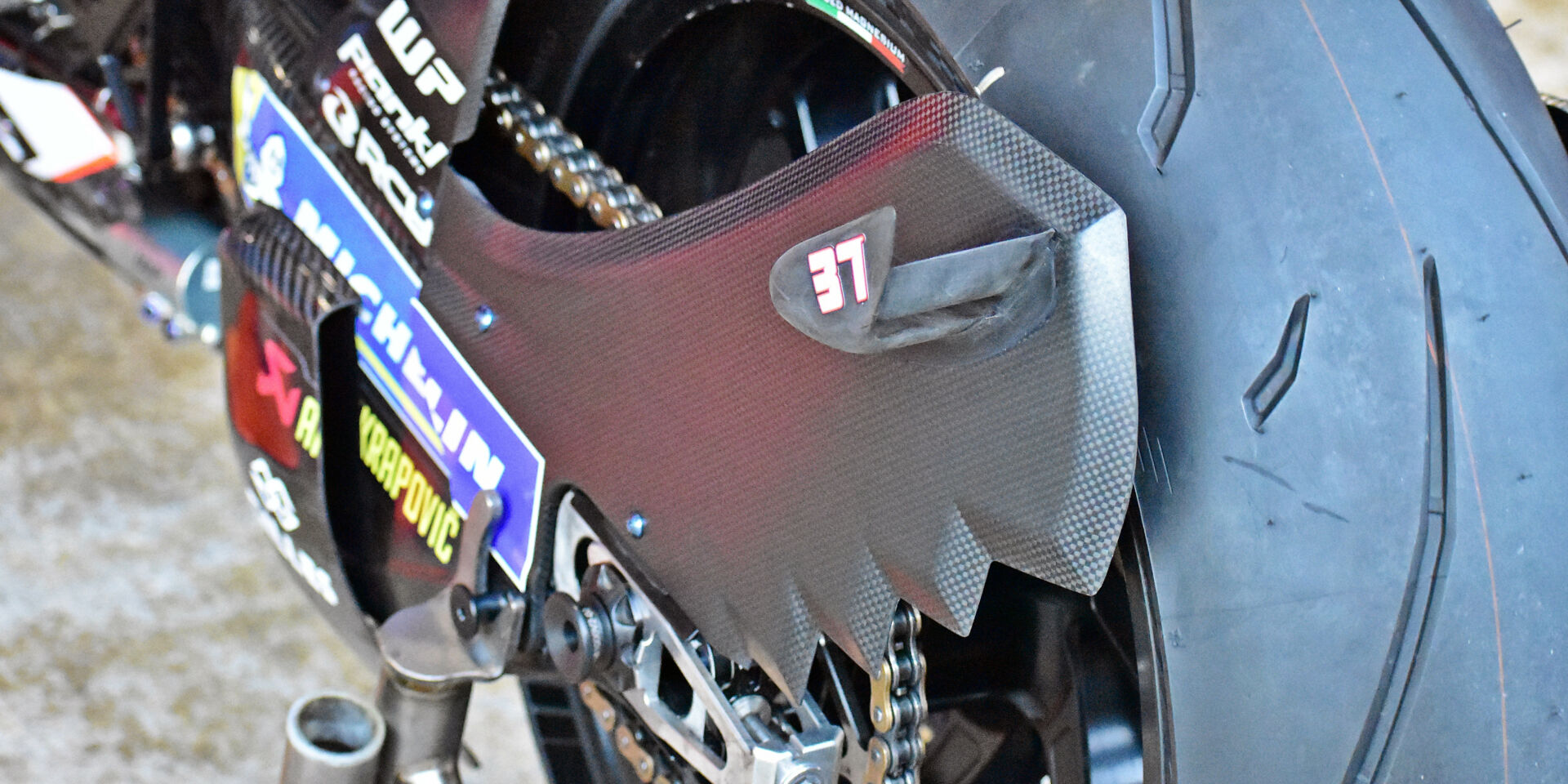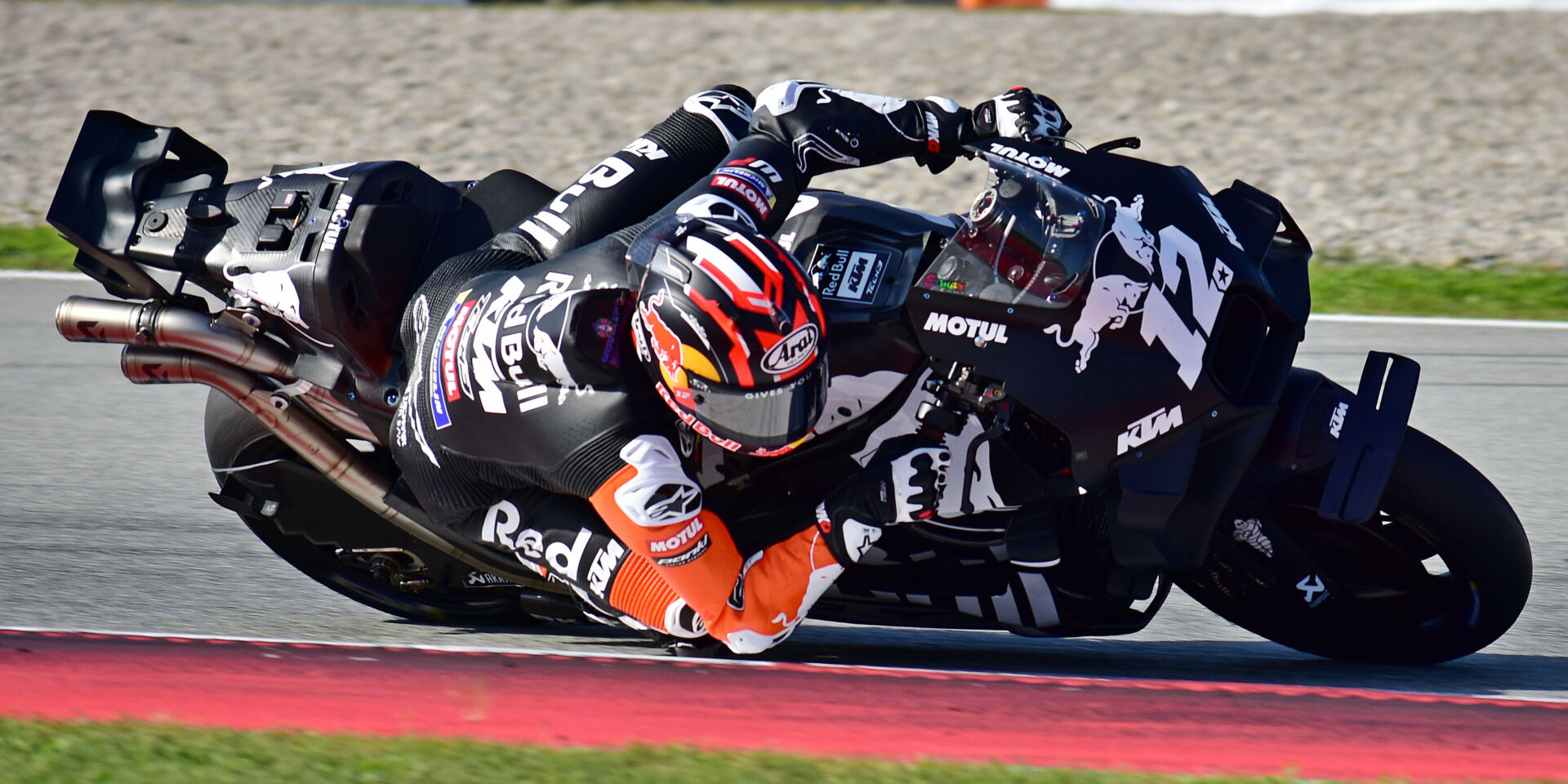First person/opinion:
By Michael Gougis
Back in 2009, Kawasaki decided to pull out of MotoGP racing. But with a contract with series organizers requiring the company to put a bike on the grid, Kawasaki created the Hayate racing program. A single bike, with Marco Melandri on board, participated just enough to satisfy the requirements of the contract between Kawasaki and Dorna, and the machine received no upgrades during the year.
The most recent court statement surrounding KTM’s financial difficulties state that the company’s withdrawal from MotoGP, Moto2 and Moto3 racing is “planned.” But it does not expand on what that means, and does not give a date by which the company will do so.
So far, all signs point to KTM continuing its Grand Prix racing efforts in 2025. The extent to which it will do so is, however, still unclear. The current MotoGP technological climate is like a river: If you are not developing the racebike, if you are not pushing upstream, you are being swept downstream toward the bottom of the time sheets. And the question is to what extent KTM will be pushing upstream.
On the positive side:
MotoGP testing continues. The team just completed a private test at Jerez. The racing department has its own budget and operates as a separate entity, with revenue streams from sponsors, including Red Bull. Tech3’s Herve Poncheral, who runs satellite factory-spec RC16s, says in multiple media reports that everything is proceeding as normal.
And KTM is contractually obligated to field machines in MotoGP. Again, the reality is that we don’t know the specifics of the contract between manufacturers and Dorna, so precisely what KTM must do, or what penalties it will face if it withdraws, are issues that will become clear only with the team’s activities in the near future.

On the negative side:
In recent years, KTM has been at the absolute bleeding edge of MotoGP racebike technological development. Its aerodynamic developments and experiments have been matched by Ducati and Aprilia, but not exceeded by them. The company was the first in MotoGP to regularly race with a carbon-fiber frame. The serrated-edge swingarm-mounted winglets are a development ahead of anything else on the grid.
Development costs money, especially the last bit of development that brings a bike from fifth to the podium, or from third to first. Since KTM is ultimately responsible for the technological development of the RC16, the bankruptcy court and creditors likely will have some say into whether racebike R&D is warranted in the company’s current state.

It’s one thing to show up with last year’s bikes. It’s another to keep developing new ones. As we saw in 2024, the championship-winning Ducati Desmosedici GP23 was quick but tricky, capable of the occasional win but not capable of running consistently with the evolutionary GP24. And KTM’s RC16 was a podium finisher, not a race winner, last year. Asking whether KTM will be allowed to spend money on racebike development is a legit question. It is also legitimate to ask if the 2024-spec machine, or even an updated 2025 model, is good enough to win next year while the teams around it are developing every time they go out.
As the technical specifications for Moto2 are quite restricted, KTM’s teams in Moto2 will likely be least affected, performance-wise, by the current financial difficulties. Development of the Moto3 machine, on the other hand, is subject to the same concerns as those surrounding the development of the RC16.
Back in 2009, Melandri pulled a few surprises out of the hat, including a second-place at Le Mans. And in recent years, last season’s Ducati has been good for a handful of wins, especially early in the season as the company dialed in its latest factory bike. If development on the KTM RC16 is frozen, particularly in light of teams like Honda and Yamaha getting concessions to accelerate their development efforts, it’s hard to see the RC16 riders on top of the podium. It’s not impossible to see them pulling a few surprises of their own. Where KTM falls on the scale of accomplishments in 2025 will be impacted by not only how good the RC16 is, but how much work KTM will be allowed to put into making it better.







